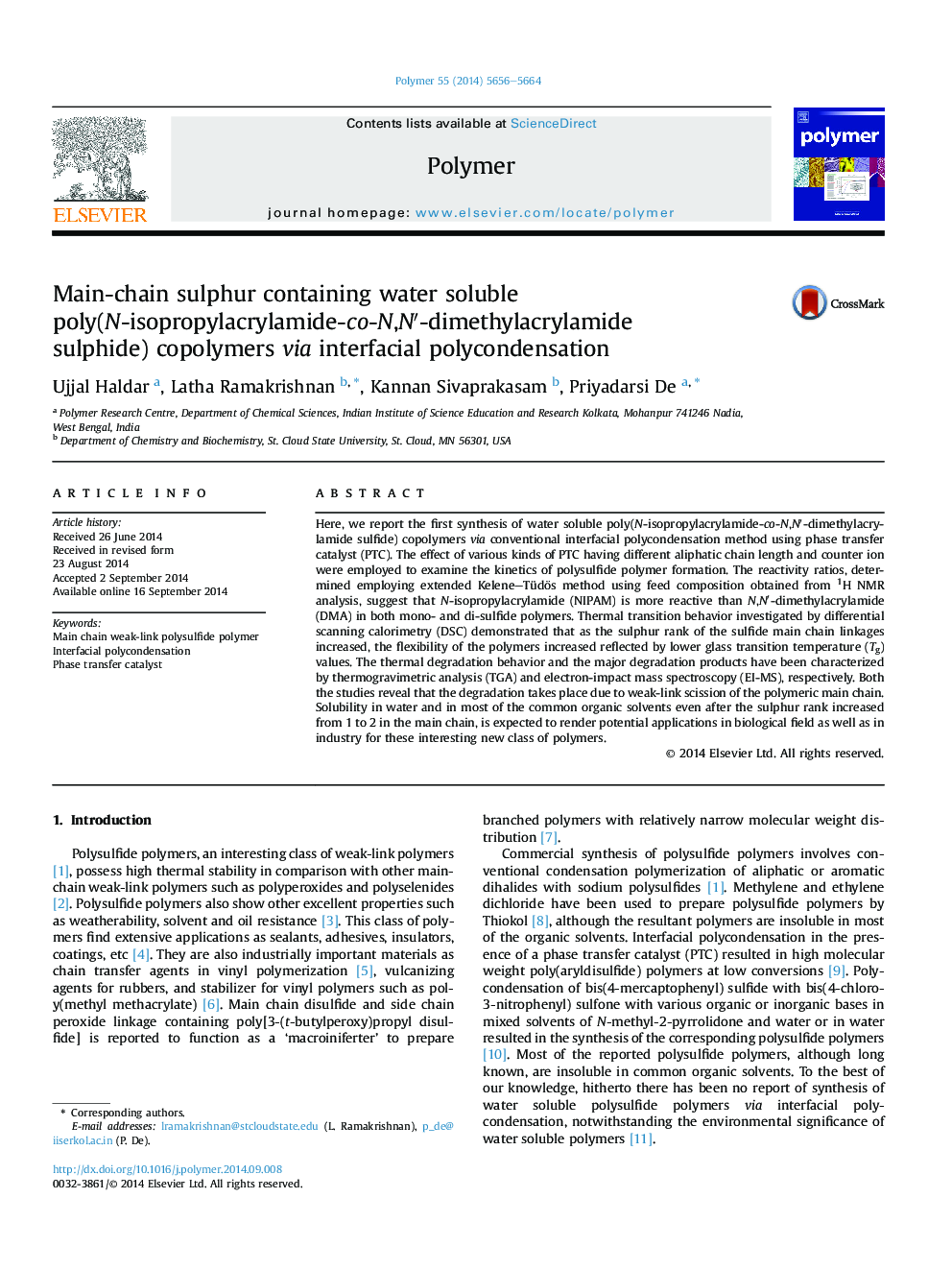| کد مقاله | کد نشریه | سال انتشار | مقاله انگلیسی | نسخه تمام متن |
|---|---|---|---|---|
| 5180700 | 1380941 | 2014 | 9 صفحه PDF | دانلود رایگان |

- We have synthesized water soluble poly(N-isopropylacrylamide-co-N,Nâ²-dimethylacrylamide sulfide) copolymers.
- The reactivity ratios are determined by employing extended Kelene-Tüdös method.
- The reaction kinetics are monitored by varying the concentration, temperature and the phase transfer catalyst (PTC).
- Thermal stabilities of polysulfide polymers are reasonably good.
- Degradation takes place due to weak-link scission of the polymeric main chain.
Here, we report the first synthesis of water soluble poly(N-isopropylacrylamide-co-N,Nâ²-dimethylacrylamide sulfide) copolymers via conventional interfacial polycondensation method using phase transfer catalyst (PTC). The effect of various kinds of PTC having different aliphatic chain length and counter ion were employed to examine the kinetics of polysulfide polymer formation. The reactivity ratios, determined employing extended Kelene-Tüdös method using feed composition obtained from 1H NMR analysis, suggest that N-isopropylacrylamide (NIPAM) is more reactive than N,Nâ²-dimethylacrylamide (DMA) in both mono- and di-sulfide polymers. Thermal transition behavior investigated by differential scanning calorimetry (DSC) demonstrated that as the sulphur rank of the sulfide main chain linkages increased, the flexibility of the polymers increased reflected by lower glass transition temperature (Tg) values. The thermal degradation behavior and the major degradation products have been characterized by thermogravimetric analysis (TGA) and electron-impact mass spectroscopy (EI-MS), respectively. Both the studies reveal that the degradation takes place due to weak-link scission of the polymeric main chain. Solubility in water and in most of the common organic solvents even after the sulphur rank increased from 1 to 2 in the main chain, is expected to render potential applications in biological field as well as in industry for these interesting new class of polymers.
Journal: Polymer - Volume 55, Issue 22, 23 October 2014, Pages 5656-5664